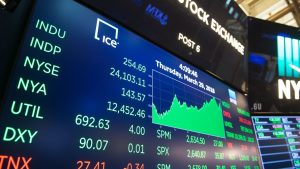What Is a Share Buyback?

In the United States, a company can repurchase shares of its stock at a price lower than its book value. The process is known as a share buyback, and takes place in a variety of ways. One of the most common methods is through a Dutch auction, in which the company posts its stock prices for sale to potential investors. Depending on the size of the buyback, a company may issue new shares in conjunction with the buyback.
The amount of shares that a company can repurchase depends on its capital structure and the company’s market value. The amount to be repurchased depends on the percentage of debt a company needs to settle and the market price of its shares. The calculation is straightforward but iterative. If a company’s shares are worth a hundred dollars, the amount to be bought is ten cents. Nevertheless, the company’s shareholders are entitled to a discount of twenty cents per share, based on the materiality level of the buyback program.
Another method of share buyback is through reverse mergers. This method involves buying back a company’s own shares from the public and selling them back to its shareholders. In such a situation, the company wants to increase its price to boost its share price while improving its financial ratios. It has the added benefit of reducing the company’s debt burden. When this method is used, shareholders may receive more cash, which is a significant benefit.
Share buybacks aren’t without risks. Companies in high-growth industries may find themselves in the middle of a share buyback that backfires. Such businesses tend to change rapidly and must demonstrate high growth potential to attract long-term investors. In the long run, a share buyback can have a positive impact on a company’s stock price. So, it is wise to understand the risks and benefits of a share buyback before making a decision to implement one.
In addition to reducing the risk of dilution, a share buyback can also improve the company’s earnings per share (EPS), which is an important indicator of profitability. In the short-term, the share price can increase as a result. The management is sending a message that their shares are undervalued. This will increase their EPS, boosting the overall value of the company’s stock. It also helps companies boost their earnings per share, which is important to the company’s shareholders.
Another risk of a share buyback is the possibility of signaling effect. If a company is raising money with an equity-financed business, for example, the issuance of a new product line will raise the company’s share price. That repurchase will lower its total number of shares in the market, but the investors will continue to have a positive impact on its earnings. When investors sell their shares, however, they may still enjoy a tax break from the purchase.
While a share buyback may have some risks for investors, it is a sign that the company is healthy and no longer needs the extra cash for growth. If a company is making this decision, it can also send a signal to the market that it has run out of ideas or the pipeline to increase its earnings per share. As a result, share buybacks can help investors increase their stake in the company’s stock. However, the risks are greater if the company is not generating enough new ideas.






